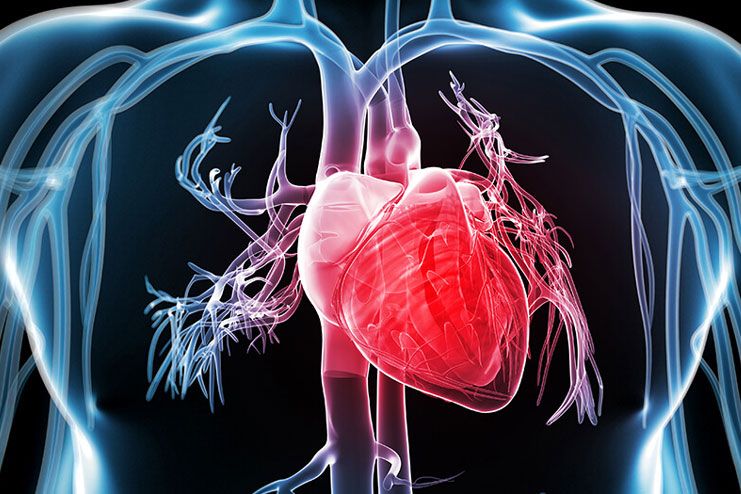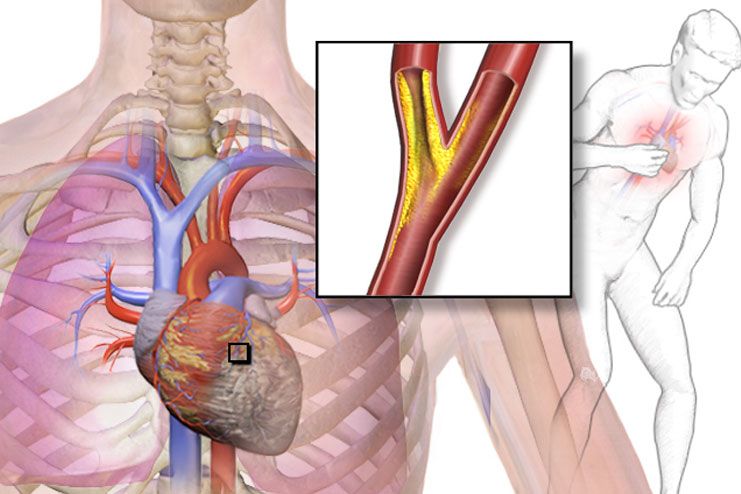Affiliate Disclaimer
Some links in this article are affiliate links. We may earn a small commission if you make a purchase through these links, at no extra cost to you. We only recommend products we find useful to our readersOur heart health is often pushed aside to the back. What we don’t end up realizing is the fact that our cardiovascular health plays a crucial role on our overall well being. You must have heard about Angina, right? While the condition itself is dangerous, unstable angina is even worse.
Chest pain or even the relayed pain around the chest can be a matter of grave concern. Unstable angina complicates the situation even further. Whatever the condition be, it is actually very important to ensure that you do opt for treatment for unstable angina without fail.
By the end of this article, you will have a clarified about unstable angina and everything there is to know about the condition altogether.
What is Unstable Angina?

Unstable Angina is a coronary symptom which is acute and is defined by the predominant absence of any evident biochemical damage to the myocardial tissues of the cardiovascular system of an individual.
In simpler words, Unstable Angina or UA is a pattern of acute angina which is characterized by random or unpredictable spurts without any obvious triggers inside your body.
It is often characterized under the group of Acute Coronary Symptoms (ACS) and even with the acute symptoms, it is very important to pay close heed to the symptoms as it is nothing short of a medical emergency.
The main reason why the condition is termed “unstable” is mainly because of the fact that it doesn’t follow the common symptoms which are exerted by the condition of stable angina.
What Causes Unstable Angina?

The main reason why Unstable Angina is termed as “Unstable” is mainly because of the lack of fixed and mainstream symptoms as well as causes.
It is thus important to ensure that you do lookout for the symptoms and not take them for granted because that’s where the problem stems from.
Doctors actually do have an extensive issue when it comes to detecting the causes behind the condition, which makes it even riskier in medical terms.
Often times, the doctors tend to regard the primary cause behind the same to be because of the rupture caused to the plaques inside the coronary artery, contributing to the temporary symptoms without any associated myocardial symptoms. This is what ends up causing partial blockage to the artery, thus ending up causing an overall issue for one’s health altogether.
The lack of proper blood flow is what is often responsible for the acute symptoms that the patient with Unstable Angina experiences.
Some of the other risk factors that do contribute to the condition even further include:
- Diabetic patients
- Obesity
- Smoking
- High blood cholesterol levels
- Hereditary and prior family history with the condition
- High blood pressure
What are the Symptoms of Unstable Angina?

Coming down to the main prospect of understanding when it comes to Unstable Angina. Given the fact that the symptoms are quite acute and momentary, it is important that you know and understands what is wrong with your body. If you don’t necessarily know and understand the symptoms, chances are that the same can prove out to be quite fatal for one’s health.
Some of the common symptoms of Unstable Angina include:
- Feeling pain around the chest region while you are at rest
- Symptoms which occur all of a sudden without any previous medical history
- Symptoms which might be getting worse with further medical treatment
- Experiencing pain even with minimal exertion
Some of the trivial and common symptoms include:
- Coughing and wheezing
- Shortness of breath
- Profuse sweating
- Overwhelming feeling of panic and anxiety
- Feeling weak and dizzy
How To Diagnose An Unstable Angina?
 Coming on to the next prospect of discussion – how to diagnose the condition? You’d actually be shocked to know and understand for a fact that the condition of unstable angina is a matter of medical emergency and needs an immediate diagnosis to start the treatment altogether.
Coming on to the next prospect of discussion – how to diagnose the condition? You’d actually be shocked to know and understand for a fact that the condition of unstable angina is a matter of medical emergency and needs an immediate diagnosis to start the treatment altogether.
Assessing the symptoms and being vocal about them is what helps get rid of the problem altogether. If you have been worried about any of the prevalent symptoms that you must have been experiencing, it is important to get the condition checked on by your doctor.
Some of the symptoms that one should get checked out by their doctor include:
- If you are experiencing an Angina at rest, especially if the condition does last for over 20-30 minutes at a stretch
- New onset of angina which prohibits you from indulging in physical activity
- Increased episodes of stable angina and that too quite frequently
If your doctor finds you experiencing all or any of these symptoms, chances are that he/she will diagnose you with acute coronary symptoms and get an ECG done immediately as well as the blood test to get the levels of the cardiac enzymes checked out for good.
In the ECG, the doctors tend to focus more on the “ST Segments” and any kind of elevation or even lack of it tends to be an indicative factor for the blockages around the coronary artery. The improper levels of the cardiac enzymes also indicate cell damage in the cardiac system. It is actually quite important to ensure that you do pay close attention to the condition because the persistent presence of the blockage increases the risks of strokes or heart attack as well.
How To Treat Unstable Angina?
 While the condition is acute, it is important to seek treatments for the Unstable Angina pain relief without a speck of doubt. This is where you make healthy choices for yourself.
While the condition is acute, it is important to seek treatments for the Unstable Angina pain relief without a speck of doubt. This is where you make healthy choices for yourself.
When it does come down to the treatment for unstable angina, the possibilities are not that extensive actually. There are predominantly two approaches that the doctors tend to opt for – opting for drugs to stabilize and then opt for non-invasive treatment methods and the second one being the stabilizing with the drugs following opting for the invasive treatment methods.
It is important to stabilize the symptoms because the lack of it is what ends up being a problem altogether. Foregoing the symptoms can inflict negative impacts that can even result in the induction of heart attacks and such that you possibly didn’t even think of.
The mode and the severity of the treatment do depend on the blockage of the artery. If the blockage in the coronary artery is big and needs immediate treatment to ease the condition, chances are that the doctors will suggest surgery after stabilizing the patient with drugs.
Some of the common surgeries that are suggested for this condition do include coronary artery bypass graft or even a percutaneous coronary intervention.
Stable Vs. Unstable Angina

As we did mention before, the condition of stable and unstable angina both imply negative impacts on one’s health. It is important to ensure that you do stick to the beneficial norms of difference.
There are a number of factors that differentiate the unstable form from the stable one – some of which we are going to be discussing below.
| Characteristics | Stable Angina | Unstable Angina |
| By Definition | The coronary symptoms which occur because of certain physical stress, underlying degradation of one’s cardiovascular health or the associated | The coronary symptoms which occur without any salient trigger, doesn’t have any kind of underlying cardiovascular ailment associated with the condition |
| Pathology | Induction of ischemia because of fixed stenosis of the coronary arteries | Induction of ischemia because of the prevalent rupture of any of the blockages in the coronary artery |
| Treatment | The pain disappears quickly following the intake of medications like nitroglycerin under the tongue | Needs emergency treatment because of the heightened risks associated with myocardial infarction or even cardiac arrest |
| Chest pain | Lasts 2-5 minutes | Lasts more than 10 minutes |
It is very important to opt for immediate medical attention to get rid of unstable angina. Given the fact that the condition ends up causing a plethora of complications in the body, it is very important to ensure that one opts for effective remedies to get rid of the problems altogether. In here, we have suggested and stated everything that there is to know about unstable angina and the treatment and we hope it helps in bringing better awareness surrounding the condition.
In this Article


















